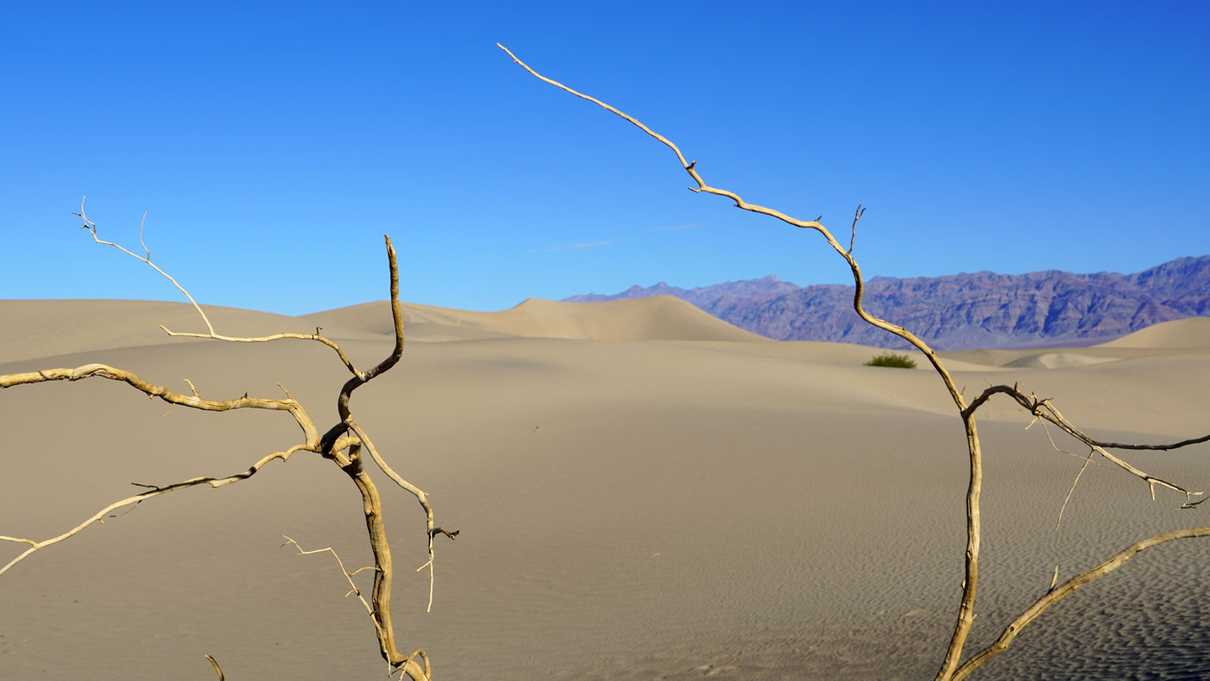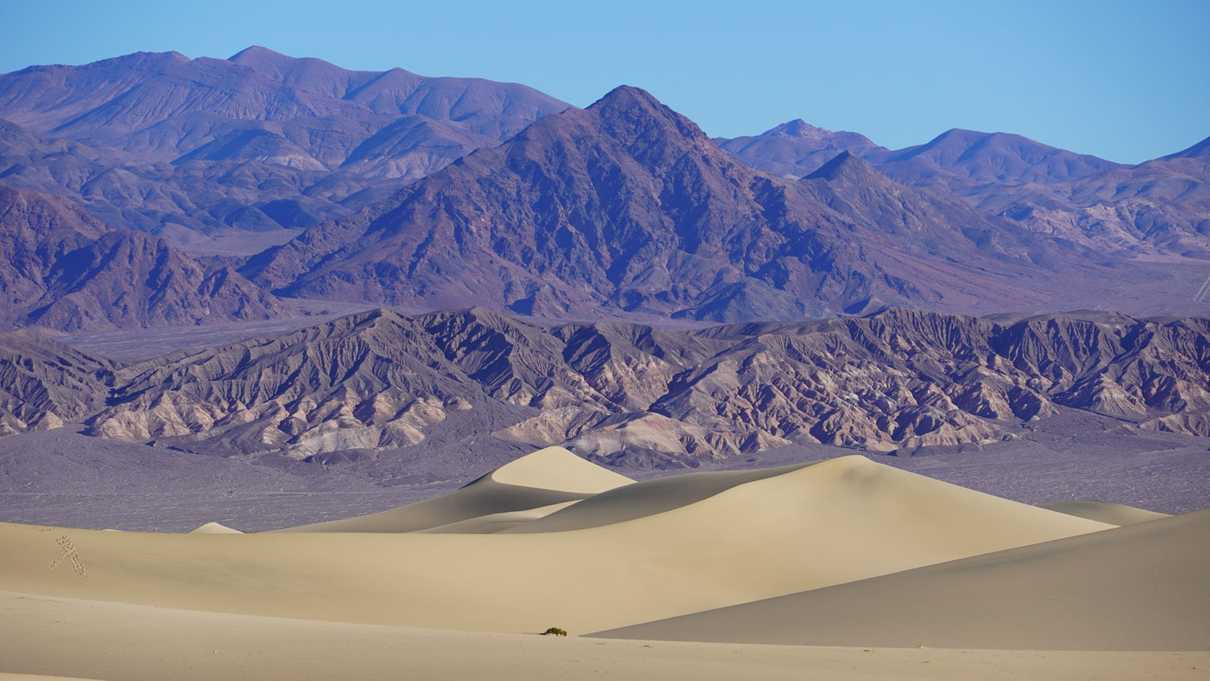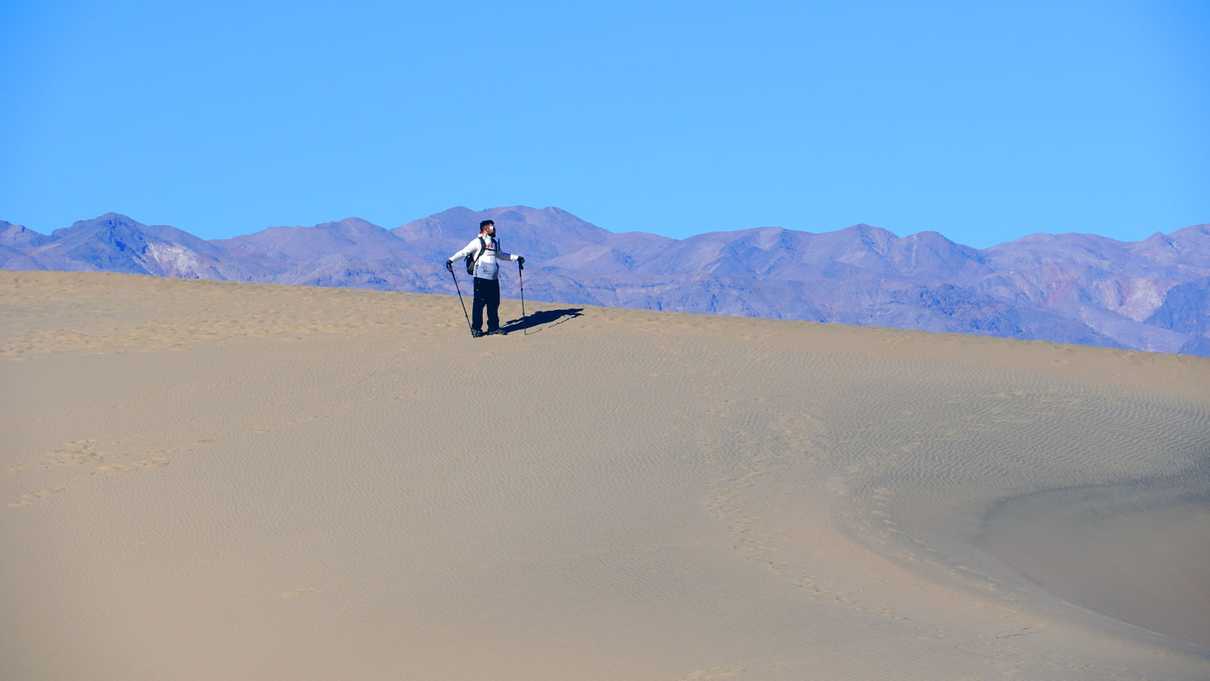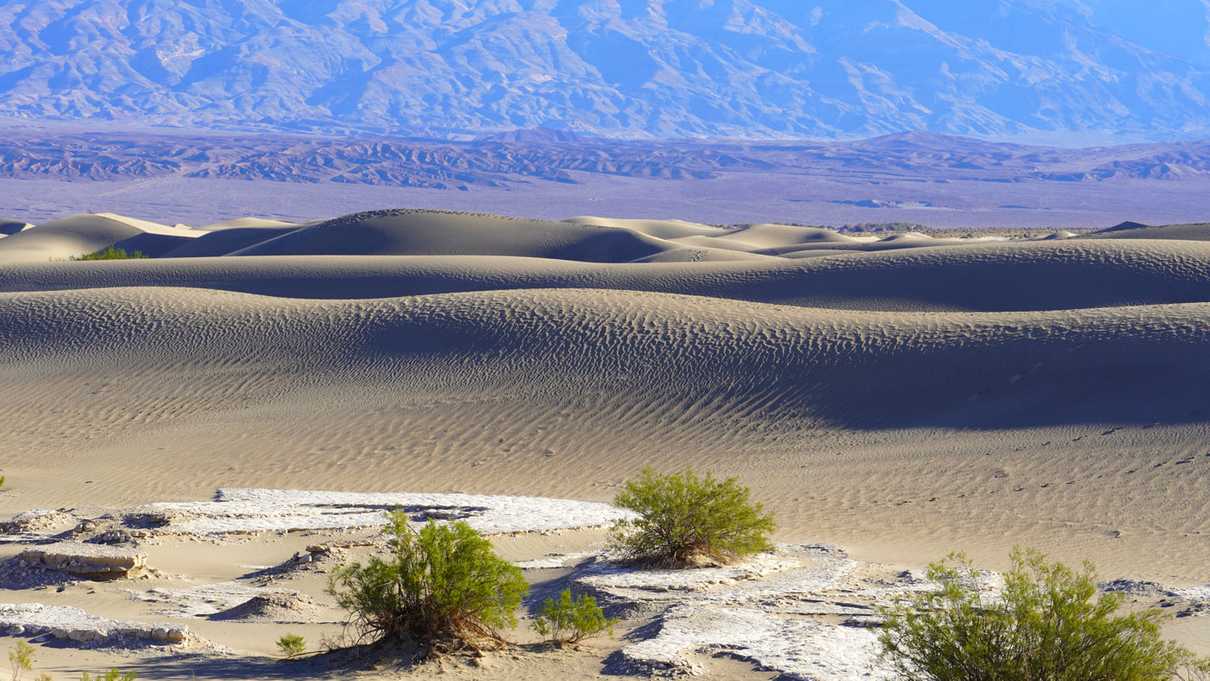Hiking Through The Mesquite Flat Sand Dunes at Death Valley
For many people, the image of tall cacti trees and vast stretches of sand dunes are what is visualized in the mind’s eye when they think about deserts. While a beautiful scene, this is unfortunately simply not always the case. For sand dunes to form, certain specific conditions must be met. Luckily Death Valley National Park has a number of locations within the park grounds that meet these requirements and exploring the sand dunes is an otherworldly and magical experience.
Directions to Mesquite Flat Sand Dunes
- From Stovepipe Wells, drive east on CA-190 for 2 miles to the parking area.
- From Furnace Creek, take CA-190 northwest for 23 miles to the parking area.
Formation of Dunes at Death Valley
Sand is the result of weathering that takes place over time as wind and water erode away rock. Death Valley is surrounded by the Panamint Range to the west and the Amargosa Range to the east, providing plenty of source material to form sand. These mountain ranges also provide the perfect location for the sand to collect and be trapped, moving only slightly to form various shaped dunes.
Of the differing types of dunes, one can find crescent, linear and star shaped dunes at Death Valley. Crescents, the most common type, move the fastest and are generally shaped like the letter C. The larger rippled windward side, where wind pushes the sand up, faces the directional wind and the smaller slip face side is where wind doesn’t reach. Linear dunes are nearly straight where wind forces are equal from both sides and star shaped dunes have slip faces on at least three sides, indicative of wind coming from multiple directions.
Exploring Mesquite Flat Sand Dunes
Mesquite Flat Sand Dunes are not the only dunes within Death Valley National Park, however, they are the most accessible and therefore the most visited. Centrally located to the valley, there is plentiful parking in a paved lot with spaces for buses and RVs. Vault toilets are also located at the parking lot.
As the sand shifts due to the varying winds, there is no official trail. The dunes are an open area one is free to explore requiring no permit to hike. Visitors may venture out as far or as little into the dunes as they like or are comfortable with. The park’s site lists the hike to the tallest peak, at about 100 feet tall, as a 2 mile round trip.
The best time to visit the dunes is fall to spring as summer temperatures in Death Valley can reach as high as 130 degrees Farhenheit making hiking a dangerous activity. Regardless of the temperature, it is advisable to bring plenty of water and possibly snacks while exploring the dunes. Sensible shoes or a second pair will help keep out sand and prevent irritation during one’s visit to Death Valley.
Sunsets are incredible as the light and shadows create wonderful contrast on the ridges. In addition the soft light adds a warm glow to the sand and surrounding mountains. If one can make it out for sunrise, tracks from animals walking through the dunes can be seen before the footprints of the day’s traffic mar the surface of freshly smoothed over sand. Moonlight hikes are also popular with much of the sky visible due to limited light pollution. Care should be taken as the dunes are home to sidewinder snakes and kangaroo rats.



